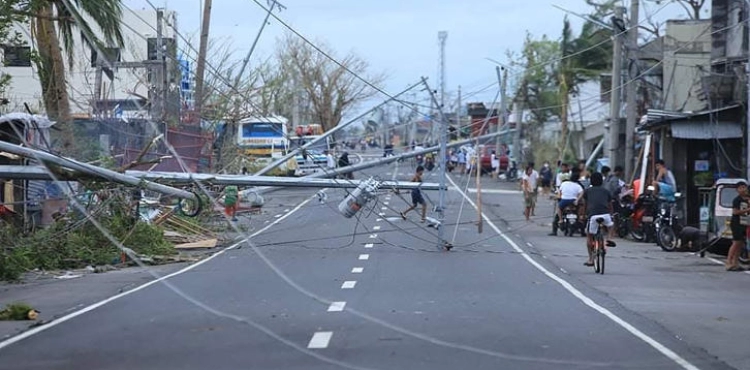The strongest typhoon to hit the Philippines this year has destroyed tens of thousands of homes and killed at least 20 people, as officials announced Monday, while communications in the worst affected areas remain cut off.
Catandoans Island and Alpay County on Lawson Island are the most affected by the storm, which was accompanied by winds of up to 225 km per hour, when it hit the east coast on Sunday.
The winds and torrential rain uprooted the roofs of homes, electrical lines and landslides.
The storm, traveling on a western course, lost its strength when it reached Manila, before heading towards the South China Sea.
"We are horrified by the damage this hurricane has caused in many regions, including Catanduanes Island and Albay province," Philippine Red Cross chief Richard Gordon said in a statement.
"In some areas, up to 90% of the homes are seriously damaged or destroyed," he said, adding, "This hurricane has invaded the lives of residents, adding to the physical, emotional and economic troubles caused by the Covid-19 epidemic."
Hundreds of thousands of people were displaced from their homes before the cyclone arrived, and most of them are still in shelter centers, while the authorities are working to restore electricity and communications in the affected areas.
Fourteen people were recorded dead in Alpay County, but the head of the county’s disaster prevention services, Cedric Daeb, confirmed that if the homes had not been evacuated, thousands of people would have died.
"Significant damage has been recorded to the infrastructure and housing," he said.
"Many people are hungry. They were mainly affected by Covid-19 due to losing their jobs and moving their housing. Some of them do not even have kitchen supplies," he added.
Seven of the victims fell in a landslide town caused by volcanic ash from the nearby active Mayon volcano.
The mayor of Guinobatan told local media that 147 homes were flooded, and some of them were no longer habitable.
Goni was classified as a "strong hurricane" when it made landfall on the island of Catanduanes, where at least six people died. The authorities estimate that the largest material damage has occurred on this island.
"We are badly affected here," said local district governor Joseph Kowa.
Most of the power lines on the island were cut due to the hurricane, while reports indicate that the toll may rise further.
"We hope the aid will arrive soon. We are short on money," Sawa told CNN in the Philippines.
Initial estimates of the Civil Defense indicate that 20,000 homes were destroyed and 55,000 others partially damaged. Significant damage was also done to agricultural areas.
"The floods occurred in just minutes, not hours," Alona Espino told AFP in Batangas City, south of Manila, adding, "We have never seen floods happen so quickly."
The Philippines witnesses about twenty tropical storms and hurricanes every year that destroy crops, fragile homes and infrastructure, leaving entire population groups in permanent poverty.
Haiyan was the worst typhoon in modern history in 2013, and killed more than 7,300 people, especially in the central city of Tacloban, which was flooded by giant waves.












